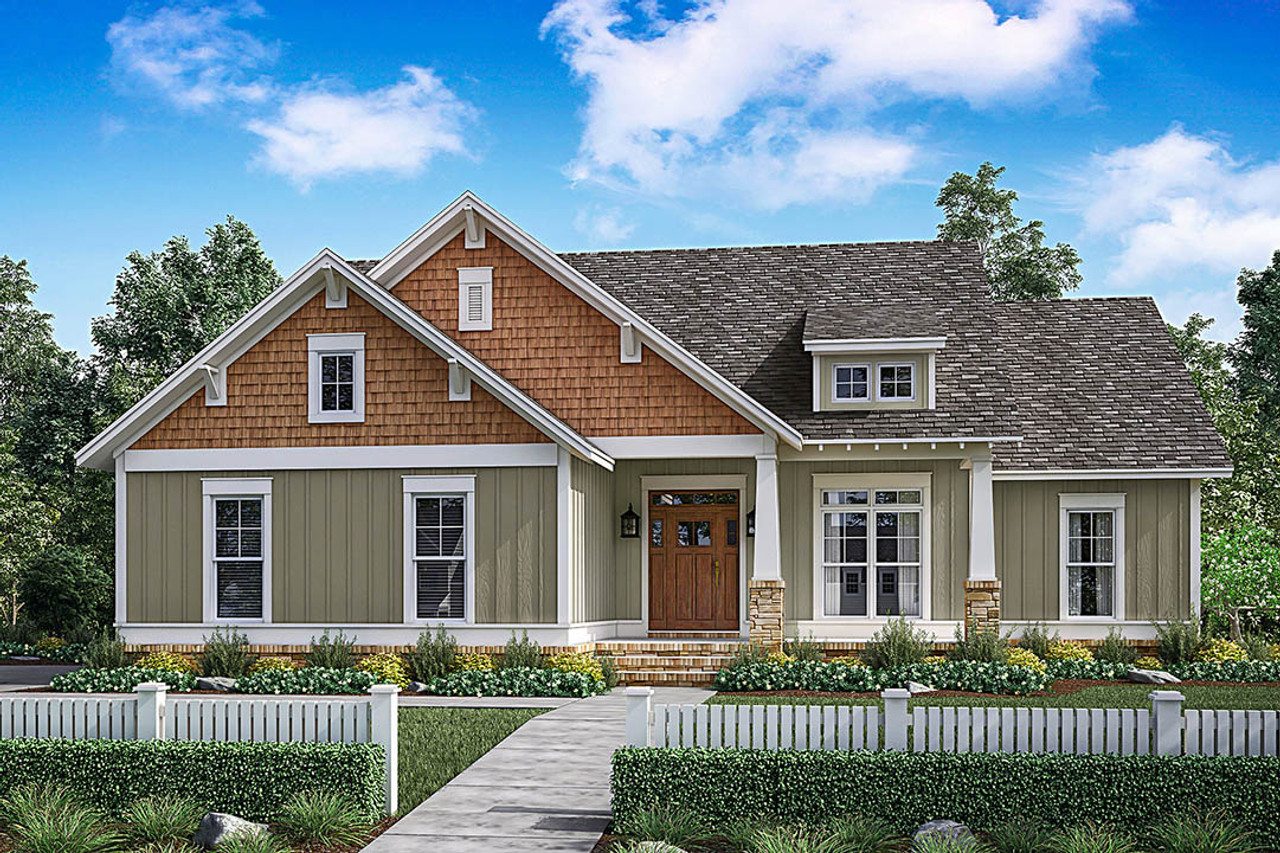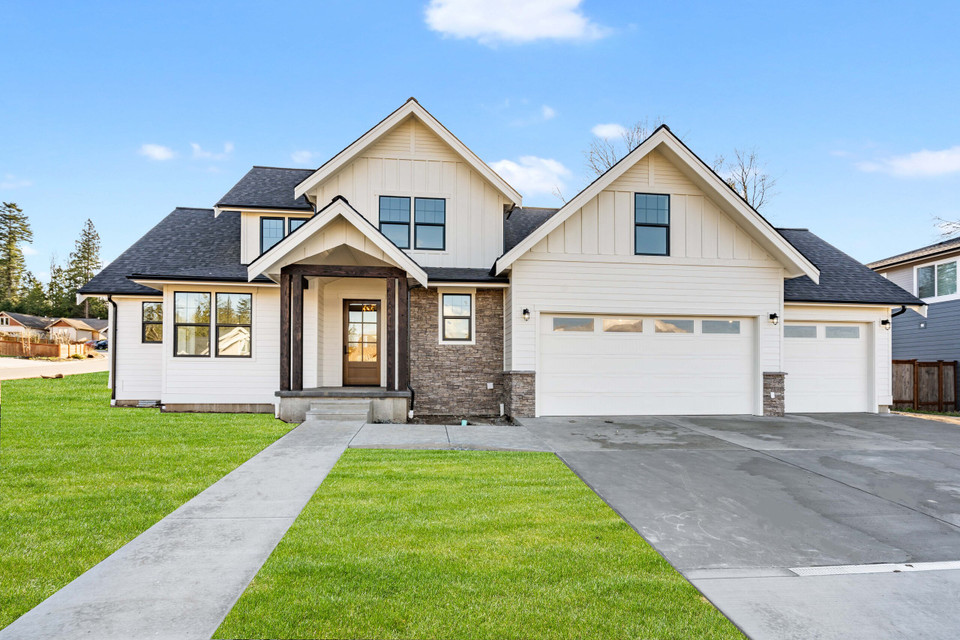Choosing the right house plan is one of the most significant decisions you'll make when building a new home. Your house plan is more than just a set of drawings — it's a blueprint for your daily life, shaping how your family interacts, how space is utilized, and how comfortable and functional your home will be in the long term. Whether you're planning a custom home from scratch or selecting from advanced house plans, understanding what to look for can help you make a choice that supports your lifestyle and future needs.
In this blog post, we'll explore the top five mistakes people often make when selecting a house plan. By recognizing these pitfalls, you can confidently navigate the process, avoid costly changes, and design a home that truly suits your family's needs. Let's dive in!
Mistake 1: Aligning Your Home with Your Family's Needs
One of the most common mistakes when selecting a house plan is overlooking the unique needs of your family. It can be easy to fall in love with a beautiful design or a trendy floor plan, but if it doesn't accommodate your family's lifestyle, it may lead to frustration down the road.
Start by considering your current family size and any potential changes. Are you planning to expand your family, or do you expect older relatives to move in? Will you need a dedicated home office for remote work or a space for hobbies? Thinking about these aspects early on will help you choose a house plan that works not just today, but well into the future.
When reviewing house plans, pay special attention to shared spaces like the living room, dining room, and kitchen — areas that naturally become gathering spots. Ensure there's enough room for everyone to move comfortably, whether it’s a busy morning before school or a weekend gathering. Also, consider bedroom placement to balance privacy and accessibility. A master bedroom tucked away from other bedrooms can offer a peaceful retreat, while an extra bedroom near a common area might be perfect for guests or a growing child.
It's also wise to think about future needs. If you plan to age in place, consider a house plan with a main-level master suite or wider hallways that can accommodate mobility aids. Small considerations now can lead to a home that's adaptable and functional for years to come.
Ultimately, the right house plan should align with your family's needs, preferences, and future plans. Avoid this mistake by thoughtfully evaluating how your family will use the space daily and as life changes.
Mistake 2: Overlooking Practical Considerations
Another common mistake when selecting a house plan is prioritizing aesthetics over practicality. While it's natural to be drawn to a visually appealing design, a home that looks stunning but fails to meet your practical needs can quickly become a source of frustration.
One of the most critical factors to consider is square footage. Make sure the total square feet of the home aligns with your family size and lifestyle. Too little space can lead to clutter and cramped living, while too much space can mean higher maintenance costs and wasted areas. Consider not just the number of bedrooms and bathrooms but also how common areas like the living room, dining room, and kitchen connect.
Energy efficiency is another essential element that is often overlooked. Features like large windows for natural light, proper insulation, and efficient HVAC systems can make a significant difference in your home's comfort and utility costs. Choosing an open floor plan that maximizes natural light can create a sense of openness while reducing the need for artificial lighting.
Think about extra storage for seasonal items, hobbies, or future needs. Will there be enough closets, pantry space, or a mudroom to keep your home organized? These considerations may seem small now, but they can impact your daily life significantly.
Additionally, evaluate the balance between open and private spaces. While an open floor plan creates an inviting atmosphere, you may still want some private areas for focused work, study, or relaxation. If you work from home, having a home office separated from bustling common areas can be crucial.
When it comes to practical considerations, the details matter. Ensuring that your chosen house plan balances beauty and functionality can help you create a home that truly supports your lifestyle.
Mistake 3: Not Accounting for Outdoor Spaces
A common oversight when selecting a house plan is neglecting to consider how outdoor spaces will complement your home's design. The right outdoor spaces can extend your living area, provide a relaxing retreat, and enhance your family's lifestyle — but only if they're thoughtfully planned from the start.
Before finalizing a house plan, think about how you'll use outdoor areas. Do you envision a spacious patio for outdoor dining, a cozy deck for morning coffee, or a play area for children and pets? If you love to entertain, an outdoor kitchen or fire pit could be a valuable addition. On the other hand, if you prefer privacy, fencing, landscaping, and strategic window placement can help create a more secluded retreat.
Natural light and views also play a role in blending indoor and outdoor spaces. Large windows and sliding glass doors can create a seamless flow between your living room or dining room and a backyard patio, making your home feel more open and inviting. If your lot offers scenic views, consider positioning common areas like the living room or master bedroom to take advantage of these vistas.
Don't overlook practical considerations like shade, shelter, and privacy. A covered porch can provide a retreat from the sun in warmer climates, while pergolas and trellises can create shaded walkways. Additionally, think about the connection between indoor and outdoor spaces — will there be easy access to a bathroom from the pool area, or quick entry to the kitchen from a grilling spot?
Failing to plan for these details can result in outdoor spaces that feel disconnected or underutilized. Integrating these areas into your overall home design will create a cohesive environment that enhances both aesthetics and functionality.
Mistake 4: Not Thinking Long-Term
While it’s easy to focus on your current needs when selecting a house plan, one of the biggest mistakes you can make is failing to think long-term. A home is an investment that should support your lifestyle for many years to come, and the plan you choose should be adaptable to changes in your family, your lifestyle, and even your future needs.
Consider the potential for future expansion. If you're planning to start a family or your family size may change over time, look for a house plan that allows for additional bedrooms, bathrooms, or even a home office. Some house plans feature extra bedrooms that can be used as a nursery or a guest room, while others may have a finished basement or attic space that can be converted into usable living areas down the line.
It’s also important to think about how your home design will hold up over time. Will the style still appeal to you in 10 or 20 years, or will it feel outdated? Flexibility in layout can allow you to change spaces as needed. For instance, a master suite might later become a guest suite, or a living room can evolve into a multipurpose area.
Don’t forget about future needs like aging in place. If you plan to live in your home for decades, consider a plan that includes features like wider doorways, step-free entries, or an accessible home office. Designing with these considerations in mind will make your home more adaptable and enjoyable for the long run.
Thinking ahead can save you time and money by avoiding the need for significant changes or renovations later. So, take the time to ensure that your chosen house plan can accommodate your evolving family, lifestyle, and personal preferences as life progresses.
Mistake 5: Not Consulting with Experts or Using Reliable Resources
When choosing the right house plan, many homeowners skip the step of consulting with professionals or using trusted resources. It’s easy to assume that a house plan you find online will meet all your needs, but house design is a complex process that benefits greatly from expert input.
Working with experienced designers, architects, or even builders can provide valuable insight into which plans will truly work for your specific lot, lifestyle, and future needs. They can help you understand how different floor plans will perform in real life, taking into account factors like local building codes, structural integrity, and energy efficiency.
Reliable resources, like websites offering pre-designed plans from experienced providers, are crucial for narrowing down your options. The House Plan Company, for example, offers a wide variety of home plans that are well-vetted, detailed, and customizable. These plans are designed with practical considerations in mind, so you won’t have to worry about overlooking important details.
By consulting experts or using trustworthy platforms, you can feel confident that the plan you choose will be a good fit for your property, your needs, and your budget. It can also save you time and money by preventing costly mistakes that arise from choosing a plan without expert guidance.
Avoiding the Top 5 Mistakes for a Smooth Home Design Journey
Selecting the right house plan is a significant decision that impacts the functionality, comfort, and long-term enjoyment of your home. By avoiding these five common mistakes — failing to plan for future needs, not considering outdoor spaces, overlooking how your lot will affect your plan, not thinking about your family’s evolving lifestyle, and not consulting experts or reliable resources — you can make an informed, confident choice that will serve you for years to come.
At The House Plan Company, we understand the importance of a thoughtful home design. With over 40 years of experience, we offer an extensive selection of house plans that can be customized to suit your needs, whether you’re looking for a sprawling ranch or a multi-story design with open floor plans. Our easy-to-navigate platform and expert services, including modifications to existing plans, ensure you get the perfect house plan for your family and your future.
Choosing the right home plan is a crucial step in building a home you’ll love. Take your time, consult our experts, and use trusted resources to ensure that the house you choose is the right one for you.




